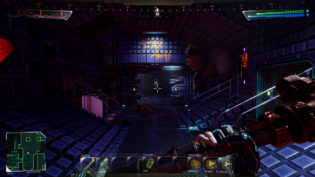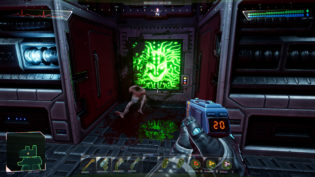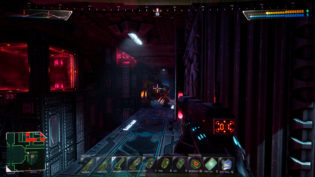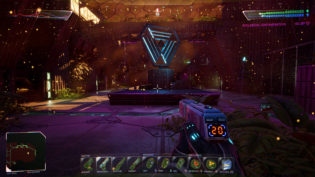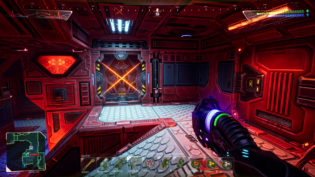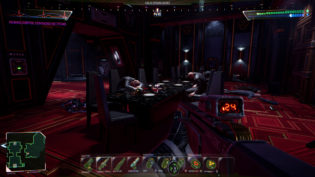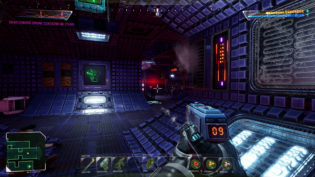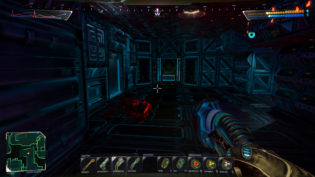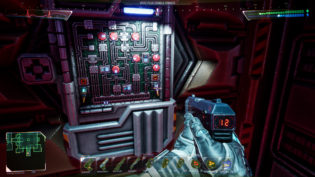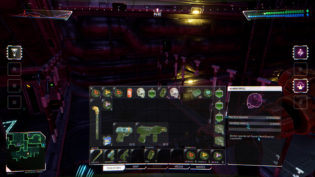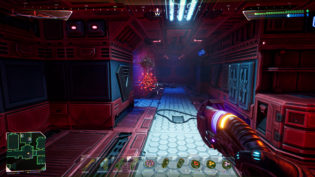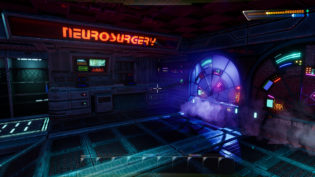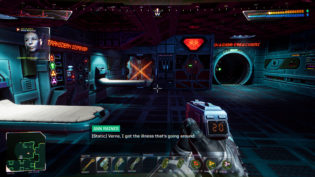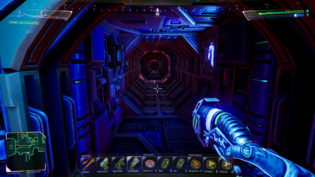The original System Shock from 1994 was an incredibly important game. In some regards it was “Ultima Underworld in space”, and alongside its two Ultima Underworld predecessors, was an early example of a game designed around simulated systems that heavily leaned into emergent gameplay. A concept that is nowadays usually defined as an “immersive sim”. Even in this rougher form the game was great and if one can get through layers of outdated UI, controls and quality of life aspects it’s exciting even today. Especially in the Enhanced Edition version released 8 years ago by Nightdive Studios, known for their faithful and high quality restorations of older games.
That was the only way to experience the original game until now when the very same Nightdive released the remake of the game. Originally announced as a Kickstarter project around the same time as the Enhanced Edition came out, this project spent a long time in development and had several major changes in its focus. It switched engines, then it was decided to expand the scope of the project and then, when it became obvious that the plan wasn’t working, switched back to being a faithful remake of the original game. Which is exactly what we got now for better and for worse.
Now where do I even start… I’ll try to describe both the original game and the way it’s been tweaked in this remake, as it is indeed very close to the source material. Being a follow up to Ultima Underworld II: Labyrinth of Worlds, the original title retained a lot of similar basic concepts and controls. So it controlled closer to how one would expect from a dungeon crawler RPG, like recent Legend of Grimrock or Vaporum, rather than Doom. This is, of course, completely changed for the remake, which behaves far closer to how System Shock 2 worked – more traditional FPS controls for most of the game and mouse interactions for the inventory/Multi-Function Display (MFD). Speaking of it, the inventory is also changed to be more similar to the one from the follow-up, some of the UI elements were redesigned, some removed and a lot of the game’s functions now have shortcuts, including the welcome Deus Ex-like quick access bar.
Another big aspect of the game was its approach to RPG-like elements – Hacker (the playable character who cannot be named in the new version) has access to hardware and software-based upgrades that can be found as items in different parts of the Citadel Station (where the game takes place). These range from simple flashlight and mini-map to things like an energy shield or boots that let you hover in the air at the cost of energy. Energy is the secondary resource that’s shown under the health meter and it can be restored via infinite but uncommon charging stations or via battery items. Several weapons in the game use energy as ammo even allowing you to overdrive the weapon to use more energy resulting in more damage. Due to which, managing energy is often as important as managing health. Especially since death is not necessarily permanent. That’s right, this was the first “Shock” game that introduced the idea of restoration bays that revive you for free as long as you’ve found one on the level and disabled the cyborg conversion process. All of this is also retained in the remake and in some ways improved.
Finally, the structure of the game was quite open-ended. The Citadel Station has been overtaken by the AI named SHODAN, who has had her ethical restrictions removed by Hacker, and has since started believing herself to be a god. She’s turning people into cyborgs, performing horrible genetic experiments and considering attacking Earth itself, as you will learn by exploring the 10 levels of the Station. And while the game limits which levels you can and cannot go to during certain portions of the game, you always have a lot to explore. For about half of the game time, you will freely move around 6 levels of the station, doing things in any order you want. You cannot complete main objectives in an incorrect order, but other than that, you can explore how much you want and prepare the solutions for future problems before you even know you need them.
This aspect is entirely retained in this remake and to a fault. After the initial few levels and until the final couple of levels which are linear in progression, you have a gigantic chunk of the game where understanding what to do and where to go can be a problem. Levels are huge, new enemies spawn in, some areas are locked behind keys or door codes you don’t know where to find, some areas contain radiation or biological contamination and drain your health, not all levels are connected via the same elevators and you need to remember which ones go to which levels… On top of that, data sticks and audio logs (and yes, the original game started this trend) can be hard to find even with tools that show you items on the map. And when you do find them they are all dropped into a general pile of logs and documents only sorted by the level you found them on. There are no objective lists, automatic marks on the map are vague and sometimes may disappear for no reason and unlike the original game you cannot add text to the map to record codes you may randomly find – something that you have to do often, so get your pen and paper ready. If you’ve not played for a day and then load your save game, you will most likely not even remember what you were doing, where were you going and what was your current plan.
On top of this mess, System Shock Remake changes a few things and adds new systems that make the confusion and constant micro-management even worse. You can mod weapons now, just like in the sequel. And it costs money now, just like in the sequel. Except, to get money you need to either randomly find them one coin at a time, or vacuum different junk from the levels, turn it into garbage which then can be exchanged for money in special machines that exist somewhere on the level. Game seems very keen on motivating you keep all of the weapons and upgrade them, even though you never have space for more then a couple guns and most of them suck anyway. As despite removing some of the weapons from the original game, the remake adds a few that are almost entirely useless as they’re not good enough and you barely ever have any ammo for them. Remake also adds one elevator per level where you can drop your items, but the storage is tiny, the elevators are often placed in inconvenient spots and even more bizarrely, they do not exist in the last levels of the game, meaning that people who stockpiled good items and relied on this movable storage throughout the game are getting a nasty surprise.
The pace of the original due to these changes is completely thrown off. System Shock from 1994 realized that you might need to swap weapons back and forth depending on your ammo and energy situation. Now that you can mod weapons, you will not want to throw away the modded version of a gun because it’s better than the others, so you will wish to spend more time dragging garbage from level to level, stockpiling it somewhere on the floor. And you will also want pick up garbage to turn it into money, because that’s beneficial for improving your weapons. Except one of the mod stations is entirely missable because it’s in a location that gets removed from the game way before the point of no return. And said location constantly damages you so you don’t want to explore it anyway.
Speaking of that – just like in the original game, System Shock cannot be played without taking damage. Walking into dangerous irradiated or contaminated areas is part of the path you’re supposed to take. You do get protection against it, which will make your health drain slower at the cost of energy. But you cannot grab said protection until after you explore at least a few of these damaging areas unprotected, which is extremely counter-intuitive for an exploration focused game. Oh and if you’ve not been careful with healing and energy restoration items before you have to subject yourself to the extended visit to one of the dangerous areas – sucks to be you.
To be fair to the remake, it does make some of the obscure problem solutions to be more obvious and has more clarity on things in general. And although levels are too dark for their own good at times, they are at least often easier to navigate. Also the Cyberspace now feels very good, playing more like Descent, while retaining most of the odd style of the original. It lacks some cute touches the original game had, like little games you could find or text files randomly floating in the data stream, but playing it is fun this time around. Oh and the music in it is a remix of the original tune, though it’s less… bold?
Music in the remake in general is a huge disappointment. The original game had awkward but memorable harsh sounding electronic tunes that were fully dynamic, with enemy noises mixed in almost as part of the soundtrack itself. It wasn’t quite Portal 2 or what Nifflas is doing with his games, but worked really well. The remake instead chooses to have music mixed so low that you can barely hear it’s there, and transitions to and from the combat state mix are extremely uneven and rough. Although when you can hear it, it does sound nice.
System Shock remake is a far better way to experience the game than the Enhanced Edition. And experiencing System Shock is something I want to recommend to anyone interested in exploration-heavy games. Personally, I like the experience of the game more than System Shock 2, even though narratively the sequel is superior. But unfortunately, the remake doesn’t address all of the issues of the original and even adds new ones, which makes recommending the game to anyone but the people already experienced with more obtuse classic games much harder. Given how the game almost falls apart in its last 30 minutes with the ending sequences feeling as if they were added last minute, I wouldn’t be surprised if we will need an “Enhanced Edition” for the remake as well. It’s an incredible and memorable game, made even better, but still hidden under layers of really frustrating elements. I loved it, but will you?


